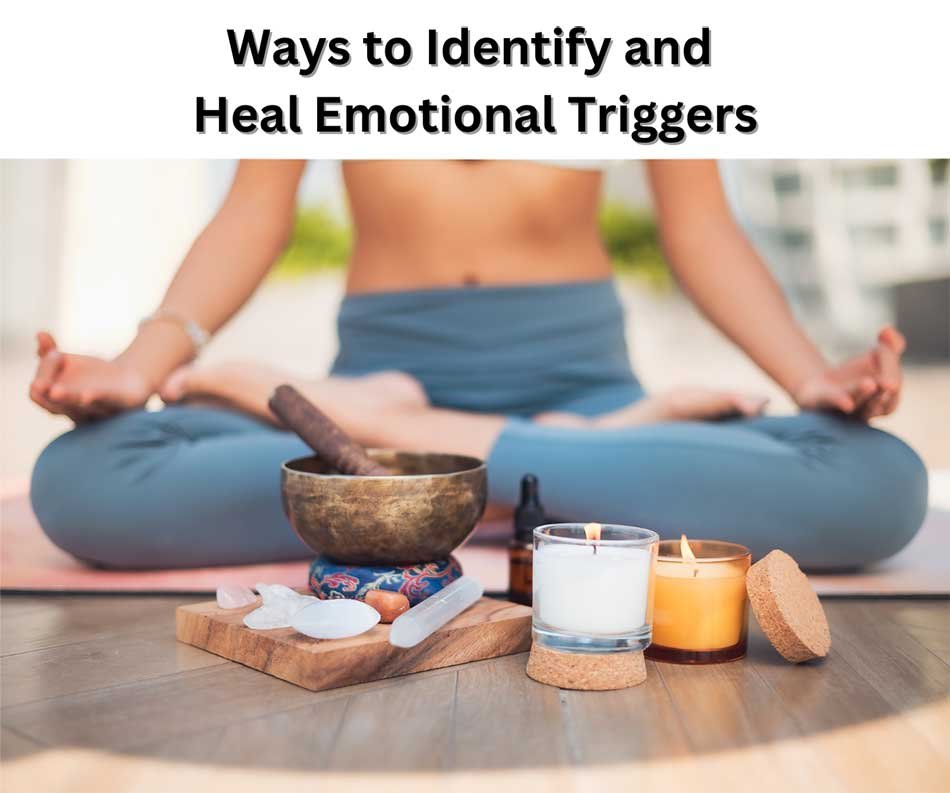
Ways to Identify and Heal Emotional Triggers
Emotional triggers are intense reactions to specific situations, words, or behaviors that evoke strong emotions like anger, sadness, or fear. These triggers often stem from unresolved past experiences, and when left unaddressed, they can disrupt relationships, decision-making, and overall well-being. Identifying and healing emotional triggers is a transformative journey that empowers you to regain control of your emotional responses and live more freely. This guide explores effective ways to uncover and heal your emotional triggers.

What Are Emotional Triggers?
Emotional triggers are cues that provoke an emotional response disproportionate to the situation. They can manifest as:
- Internal Triggers: Thoughts, memories, or bodily sensations.
- External Triggers: Words, actions, or events in your environment.
Why It’s Important to Heal Emotional Triggers
- Improves Emotional Regulation:
- Reduces overreactions and promotes calm, measured responses.
- Strengthens Relationships:
- Encourages healthier communication and reduces conflict.
- Enhances Self-Awareness:
- Helps you understand the root causes of your reactions.
- Promotes Personal Growth:
- Facilitates healing from past traumas and empowers you to move forward.
How to Identify Emotional Triggers
1. Pay Attention to Strong Reactions
Notice moments when your emotions feel intense or overwhelming.
- How to Practice:
- Reflect on situations that made you feel particularly angry, sad, or anxious.
- Write down the details: What happened, who was involved, and how you felt.
2. Identify Patterns
Look for recurring themes or scenarios that evoke similar emotional responses.
- How to Practice:
- Review your emotional reactions over time to find common triggers.
- Ask yourself: “What do these situations have in common?”
3. Explore Underlying Causes
Triggers often stem from unresolved past experiences or unmet needs.
- How to Practice:
- Reflect on how the trigger relates to past experiences.
- Consider whether it aligns with a fear, insecurity, or boundary violation.
Strategies to Heal Emotional Triggers
1. Practice Self-Awareness
Understanding your triggers is the first step to healing them.
- How to Practice:
- Use mindfulness techniques to observe your thoughts and emotions without judgment.
- Keep a journal to track your triggers and responses.
2. Reframe Your Thoughts
Shifting your perspective can help you see triggers in a new light.
- How to Practice:
- Challenge negative thoughts associated with the trigger.
- Replace “I’m not good enough” with “I am capable and growing.”
3. Set Boundaries
Protect yourself from situations or people that consistently trigger negative emotions.
- How to Practice:
- Clearly communicate your needs and limits to others.
- Learn to say no to situations that compromise your emotional well-being.
4. Engage in Self-Compassion
Be kind to yourself as you navigate the process of healing.
- How to Practice:
- Acknowledge your feelings without judgment.
- Treat yourself with the same empathy you would offer a friend.
5. Seek Professional Support
Therapists can provide tools and insights to help you work through deep-seated triggers.
- How to Practice:
- Explore therapy options such as Cognitive Behavioral Therapy (CBT) or trauma-focused therapy.
- Consider joining support groups where you can share experiences with others.
6. Use Relaxation Techniques
Calming your body and mind can help you manage triggers more effectively.
- How to Practice:
- Practice deep breathing exercises or progressive muscle relaxation.
- Try mindfulness meditation to ground yourself in the present moment.
Daily Practices to Manage Emotional Triggers
- Gratitude Journaling: Focus on positive aspects of your day to shift your mindset.
- Physical Activity: Exercise helps release tension and improves mood.
- Mindfulness Exercises: Spend time each day observing your thoughts and feelings.
- Positive Affirmations: Repeat statements that reinforce your resilience and worth.
Tools to Support Emotional Healing
- Apps: Use tools like Calm, Insight Timer, or Moodpath for mindfulness and emotional tracking.
- Books: Read “The Body Keeps the Score” by Bessel van der Kolk or “Triggers” by Marshall Goldsmith.
- Workshops: Attend emotional intelligence or personal development seminars.
Encourage Others
If this guide has inspired you to address emotional triggers, consider sharing it with someone who could benefit. Healing is a journey best undertaken with understanding and support.
Picture This
Imagine facing situations that once triggered intense emotions with newfound calm and confidence. You’ve learned to understand and heal the roots of your reactions, empowering you to navigate life with grace and resilience. Picture yourself building stronger relationships, setting healthy boundaries, and embracing each day with clarity and peace.
What step will you take today to begin healing your emotional triggers?






